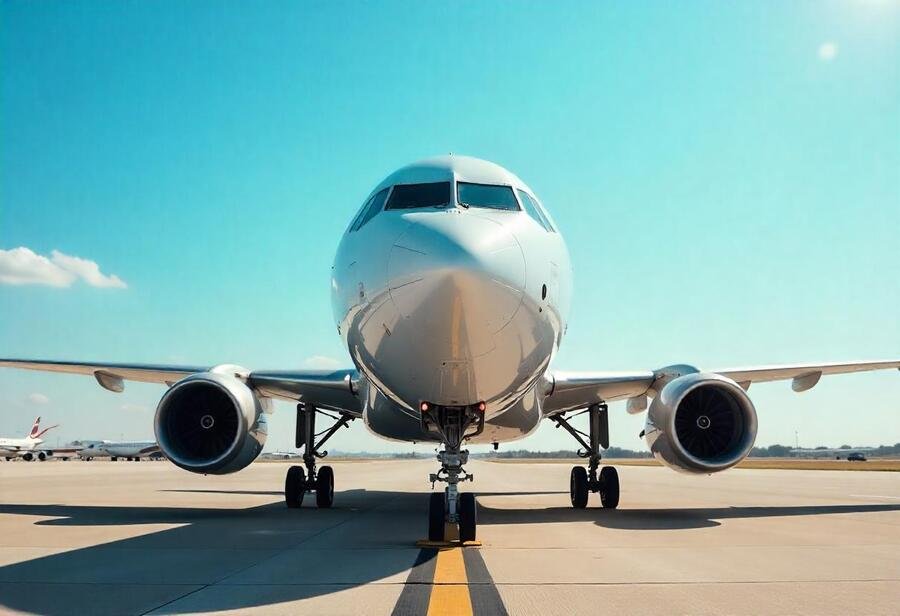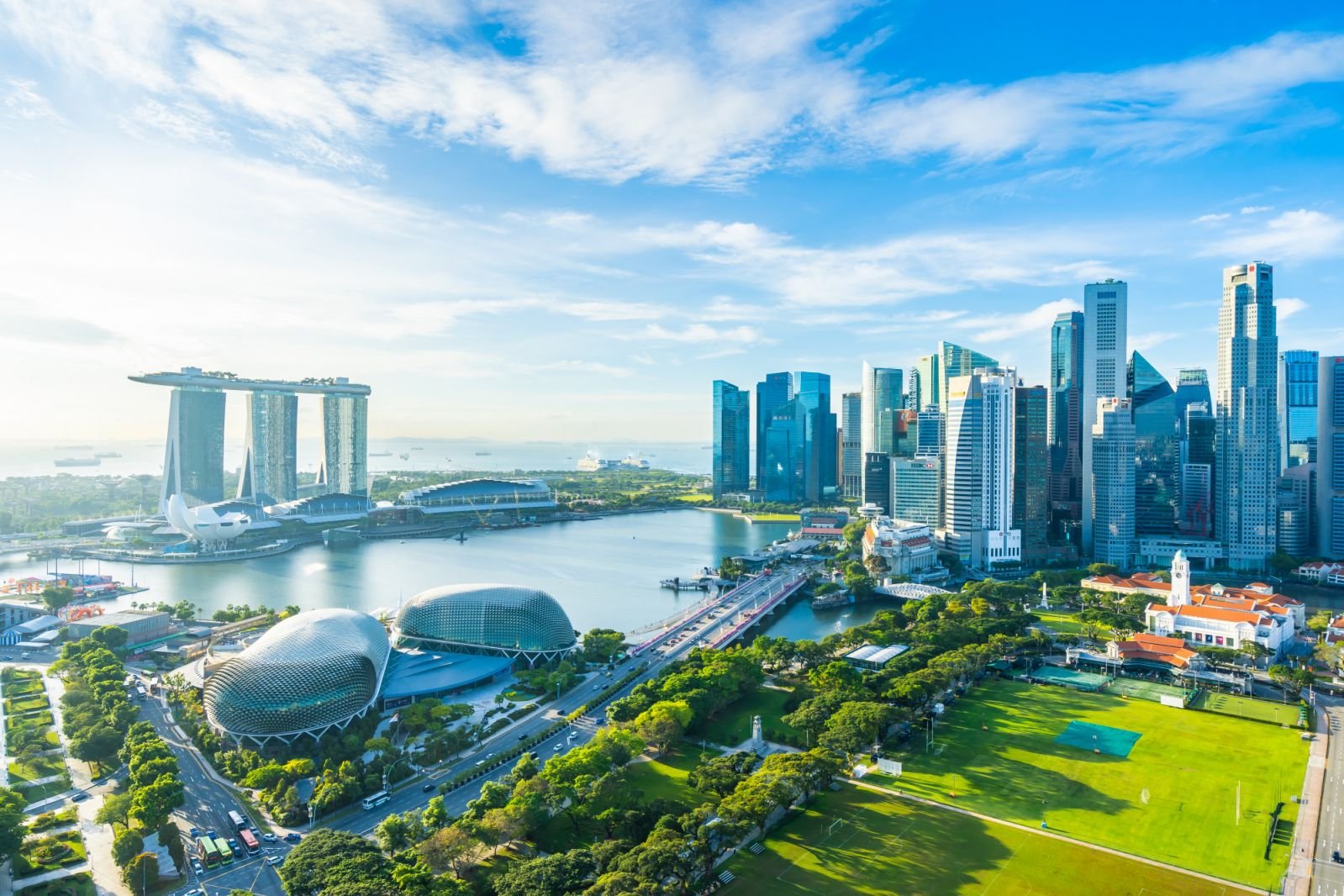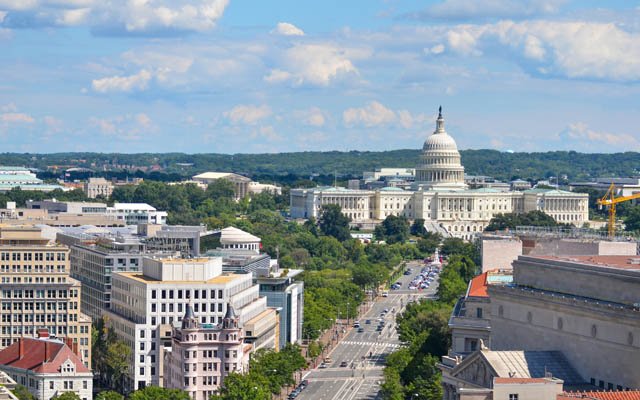Asia Travel Pulse
China Endures Direct Hit As Typhoon Wipha Submerges The Philippines And Forces Massive Shutdowns Across Asia

Monday, July 21, 2025
China and the Philippines are facing widespread devastation after Typhoon Wipha tore through the region, bringing torrential rains, violent winds, and massive flooding that have crippled transportation and forced tens of thousands from their homes. As the storm made landfall in China’s Guangdong province following days of intensified monsoon rains in the Philippines, flights were grounded, roads submerged, and entire communities displaced. The severe impact has paralyzed regional travel and triggered emergency response operations in both nations, marking one of the most destructive weather events in recent months.
Typhoon Wipha Makes Landfall in Southern China, Disrupts Travel and Forces Mass Evacuations Across the Region
Typhoon Wipha made landfall on the southern coast of China in Taishan, Guangdong province, on Sunday evening, triggering widespread disruptions across Hong Kong, Macau, southern China, and the Philippines. The storm affected regional air travel, public transportation, and residential areas, with authorities responding by issuing high-level weather alerts and initiating large-scale emergency procedures.
At approximately 5:55 p.m. local time on Sunday, Typhoon Wipha reached the coastline in Taishan. The storm brought strong winds and heavy rainfall. According to official weather data, wind speeds reached up to thirty meters per second during the storm’s peak. Shortly after landfall, the typhoon weakened into a severe tropical storm, but continued to cause damage across the region.
In the hours leading up to its landfall, Wipha had already impacted Hong Kong with severe weather conditions. Heavy rain and high winds affected much of the city, particularly northern districts near the mainland. The Hong Kong Observatory issued warnings for additional rain and strong gusts, noting that the weather system would likely continue to affect the area for several more hours.
In North Point, a district along Hong Kong’s northern shoreline, intense winds caused large sections of construction scaffolding to collapse from a residential building. The debris fell onto adjacent roads, blocking lanes and requiring emergency response teams to clear the affected areas.
Operations at Hong Kong International Airport experienced extensive delays and cancellations as a result of the storm. Around five hundred flights were cancelled, while approximately four hundred others were rescheduled for later departures or arrivals. Nearly eighty thousand travelers were affected throughout the day. Airlines operating in and out of Hong Kong responded by waiving ticket change fees and initiating rebooking procedures for impacted passengers.
Cathay Pacific, a major international carrier based in Hong Kong, suspended all flights scheduled between 5 a.m. and 6 p.m. on Sunday. This measure was taken to ensure safety as the storm passed through the region. In addition, most forms of public transportation were suspended, including ferry services, due to rough seas and safety concerns.
On the mainland, authorities in Guangdong and Hainan provinces issued high alerts as Wipha moved inland. Several major cities across southern China, including Shenzhen, Zhuhai, and Macao, experienced widespread flight cancellations or delays. Airlines and airport operators announced the suspension of all daytime flights on Sunday in response to the severe weather conditions. Emergency teams were placed on standby to address potential flooding, fallen debris, and infrastructure damage.
Wipha’s influence extended beyond China and Hong Kong. In the Philippines, the typhoon intensified the southwest monsoon, resulting in several days of persistent rainfall. According to the country’s disaster management authorities, two people were reported missing as a result of flooding and related incidents.
More than three hundred seventy thousand individuals in the Philippines were affected by the prolonged adverse weather conditions. Among them, over forty-three thousand were displaced from their homes and relocated to temporary shelters or the homes of relatives. Floodwaters inundated low-lying neighborhoods, while landslides were reported in hilly and mountainous areas.
Rescue and relief operations were activated in affected regions, focusing on evacuation, shelter, food distribution, and medical assistance. Emergency services remained on alert for further developments, particularly in regions at risk of additional landslides or river overflows.
Across all affected territories, local meteorological agencies continued to monitor the progress of Wipha. Despite weakening after landfall, the storm remained a threat due to sustained rainfall and wind gusts. Additional flooding risks and transport disruptions were anticipated, especially in areas with already saturated ground or unstable terrain.
In the aftermath of the storm’s landfall, authorities urged residents in high-risk zones to stay indoors, follow emergency advisories, and avoid non-essential travel. Coastal defenses and drainage systems were placed under close observation, and repair teams were dispatched to affected sites to restore blocked roads and damaged infrastructure.
China and the Philippines are reeling from Typhoon Wipha’s destructive path, which halted travel, flooded cities, and displaced tens of thousands across both nations. The storm’s impact has triggered a regional emergency with mass flight cancellations and widespread infrastructure damage.
Typhoon Wipha marked one of the more severe tropical systems to affect the region in 2025, highlighting the need for ongoing preparedness across East and Southeast Asia. The storm’s effects were felt simultaneously in air transport, urban infrastructure, and humanitarian safety, requiring coordination across aviation, government, and emergency response sectors.
Asia Travel Pulse
Hotels Transform into Immersive Art Galleries Across Asia

Monday, July 21, 2025
Luxury hotels across Asia are increasingly turning into vibrant art galleries, providing guests with unique cultural experiences through diverse artistic presentations. From preserving traditional arts recognized by UNESCO to contemporary interpretations of cultural landmarks, these hotels offer art enthusiasts remarkable journeys into local heritage.
Vietnam’s Culture Captured in Oil Paintings
The Anam Mui Ne, opened in early 2023, showcases Vietnam’s vivid cultural tapestry with over 250 exclusive oil paintings created by distinguished Vietnamese artists. Featured prominently within guest rooms, corridors, and common spaces, these artworks illuminate scenes from everyday Vietnamese life. Renowned artist Bui Van Quang, celebrated for capturing local customs and daily routines, and Vu Trong Anh, noted for his abstract landscapes, are among the contributors. Complementing these paintings are traditional pottery artifacts by the Cham people, a practice identified by UNESCO as intangible heritage urgently needing protection.
Artful Exploration in Hong Kong
At The Hari Hong Kong, guests can embark on a curated art journey through the hotel’s extensive art collection and the vibrant Wan Chai art district. The hotel’s “Hari Art Trail,” guided by resident artist Bibek Rai, introduces visitors to eclectic art forms including installations, surreal photography, graphic paintings, and digital artwork, all selected by London-based advisory A Space For Art. Post-tour, guests can explore local creative hotspots, including the Foo Tak Building and the exclusive PHD Group gallery.
Chiang Mai’s Celebrated Umbrella Artistry
Paying homage to Chiang Mai’s iconic Bo Sang Umbrella Village, Meliá Chiang Mai adorns its signature Mai Restaurant and Bar and executive The Level Lounge with elaborate umbrella-themed art. Intricate ceiling installations resembling umbrella frames, along with wall-mounted textile artworks created from traditional Chiang Mai materials, blend local heritage with contemporary aesthetics. Subtle colors like amber, periwinkle, and gray create a tranquil yet striking atmosphere.
Abstract Bangkok in Bold Art Forms
INNSiDE by Meliá Bangkok Sukhumvit offers guests an artistic reinterpretation of Bangkok’s famous landmarks. At the hotel’s breathtaking 34th-floor infinity pool, abstract renditions of the renowned Giant Swing make a spectacular visual backdrop. Artistic expressions throughout the hotel reference prominent structures like the Rama VIII Bridge and traditional kite-flying activities at Sanam Luang. Additionally, artistic photography and architectural designs within the hotel incorporate traditional motifs from Wat Phra Kaew, including gold-leaf adorned decorative elements.
A Gallery Dedicated to Wellness
TIA Wellness Resort in Vietnam introduces a new dimension to relaxation by integrating an innovative art gallery into its wellbeing-focused offerings. Opened in May, the gallery features 32 exclusive artworks that complement the resort’s Zen Splash philosophy. French photographer Jeff Courdrec’s analog images and Hoi An-based calligrapher Nguyễn Xuân Sinh’s ink creations highlight creative self-expression and emotional balance, aligning seamlessly with the resort’s holistic wellness approach.
Tokyo’s Grand Artistic Display
Tokyo’s prestigious Palace Hotel features over 700 pieces of artwork, blending historical heritage with contemporary aesthetics. Art Front Gallery, responsible for curating and installing these pieces, provides guided tours highlighting the narratives behind selected works. Guests explore artworks inspired by Tokyo’s dual identity: the historic grandeur of the Imperial Palace grounds and the energetic urban pulse of the Marunouchi business district.
Historic Portraiture in Vietnam
Azerai La Residence in Hue, Vietnam, uniquely presents portraits of all thirteen Nguyen Dynasty emperors, who ruled the country from 1802 to 1945. This exclusive collection is the only known gallery in Vietnam to feature all thirteen emperors together, offering guests deep insights into Vietnam’s regal heritage. Located near historical landmarks like the Citadel and Perfume River, the gallery serves as a cultural gateway for guests exploring the city’s imperial past.
Cambodian Artistic Legacy in Luxury Hotels
Cambodia’s renowned heritage hotels, Raffles Hotel Le Royal in Phnom Penh and Raffles Grand Hotel d’Angkor in Siem Reap, frequently showcase contemporary Cambodian art. Recent exhibitions featured works by acclaimed artists like DinArt and Ramya Chuon, reflecting Cambodia’s vibrant culture and the iconic Apsara dance tradition. These exhibitions, displayed throughout hotel restaurants and public spaces, emphasize the fusion of artistic expression and luxury hospitality.
Birdlife in Focus at Angsana Lang Co
At Angsana Lang Co in Vietnam, art merges with nature conservation in the Birds Sanctuary Photo Gallery. Featuring works from local photographers, this open-air exhibition highlights regional bird species and biodiversity. Part of the resort’s “Stay for Good” initiative, the gallery invites guests to engage deeply with the natural environment and participate actively through guided birdwatching experiences and photographic contributions, bridging environmental awareness with artistic appreciation.
Tags: bangkok, California, Cambodia, Chiang Mai, cultural experiences Asia, Hong Kong, hotel art galleries, Hue, Los Angeles, santa barbara, Tokyo, Vietnam, Vietnam art
Asia Travel Pulse
10 senior-friendly travel destinations in Asia

Despite its topography, Hong Kong has invested heavily in vertical accessibility. Most public walkways and crossings are equipped with escalators or lifts, and public transport is efficient, affordable and senior-friendly thanks to the Octopus card scheme. Elderly visitors benefit from multilingual support, especially in medical centres, museums and heritage sites. Parks and nature trails such as those at Victoria Peak have well-marked paths with ample rest areas.
Asia Travel Pulse
New visa fee set to raise travel cost to the US

Travellers from non-immigrant visa categories entering the US will have to pay for the new US$250 Visa Integrity Fee, set to take effect by October 1, 2025. This fee, which is established under the Trump Administration’s One Big Beautiful Bill, signed into law on July 4, applies to tourists, business travellers, students, and workers.
While it is intended as a refundable compliance bond, details on the refund process is unclear at press time.
According to news reports, the Visa Integrity Fee will apply to passport-holders from non-waiver countries, such as China and India, as well as select countries in Asia and the Middle East.
Visitors from Visa Waiver Program countries – Australia, Brunei, Japan, New Zealand, South Korea, Singapore, and Taiwan here in Asia-Pacific – will not be affected.
The new charge will join other visa application fees, including the Machine Readable Visa fee, reciprocity fees, and anti-fraud charges.
-

 Brand Stories4 hours ago
Brand Stories4 hours agoBloom Hotels: A Modern Vision of Hospitality Redefining Travel
-

 Brand Stories4 hours ago
Brand Stories4 hours agoHow Olive Group of Hotels Is Redefining Wellness Travel in India—And Why the World Is Watching
-

 Destinations & Things To Do24 hours ago
Destinations & Things To Do24 hours agoUntouched Destinations: Stunning Hidden Gems You Must Visit
-

 AI in Travel24 hours ago
AI in Travel24 hours agoAI Travel Revolution: Must-Have Guide to the Best Experience
-

 Brand Stories1 week ago
Brand Stories1 week agoHow Elon Musk’s rogue Grok chatbot became a cautionary AI tale
-

 Brand Stories2 weeks ago
Brand Stories2 weeks agoVoice AI Startup ElevenLabs Plans to Add Hubs Around the World
-

 Asia Travel Pulse2 weeks ago
Asia Travel Pulse2 weeks agoLooking For Adventure In Asia? Here Are 7 Epic Destinations You Need To Experience At Least Once – Zee News
-

 AI in Travel2 weeks ago
AI in Travel2 weeks ago‘Will AI take my job?’ A trip to a Beijing fortune-telling bar to see what lies ahead | China
-

 Brand Stories2 weeks ago
Brand Stories2 weeks agoChatGPT — the last of the great romantics
-

 Brand Stories2 weeks ago
Brand Stories2 weeks agoHumans must remain at the heart of the AI story













You must be logged in to post a comment Login